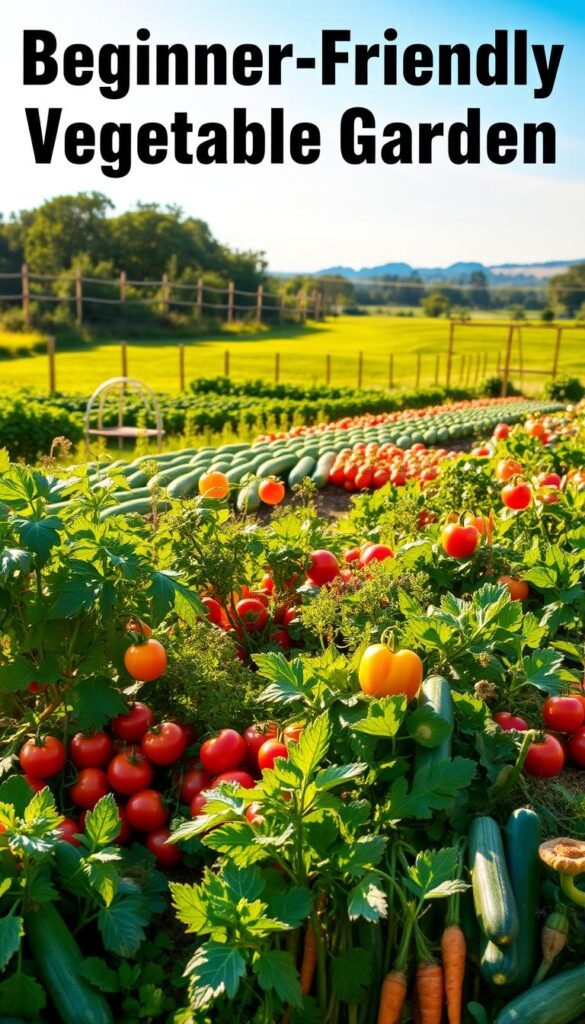Ever felt overwhelmed by rows of seed packets at the store? You’re not alone. With so many options, new growers often struggle to find plants that thrive in their space. The wrong pick can mean wasted time or disappointing harvests.
After 20+ years of growing, I’ve learned that smart varieties selection makes all the difference. Disease-resistant tomatoes or fast-growing greens can turn frustration into success. This guide simplifies the process with practical tips.
Think of it like matchmaking—your soil, climate, and goals determine which vegetables will flourish. We’ll cover how to decode seed labels and avoid common pitfalls. Soon, you’ll plant with confidence!
Why Choosing the Right Vegetable Varieties Matters
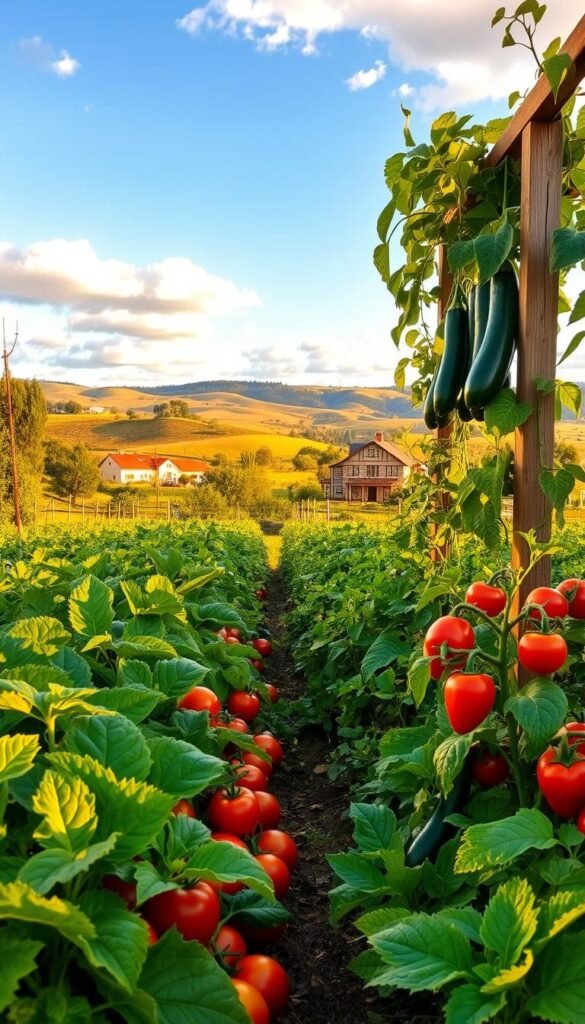
Ever wonder why some gardens burst with produce while others struggle? The secret often lies in selecting the right plants. What grows in your neighbor’s yard might flop in yours due to soil, weather, or care differences.
How Your Choices Affect Results
Farm data shows harvests can vary 30-50% based solely on varieties. For example, disease-resistant tomatoes can slash crop loss by 70%. That’s the power of smart selection.
Beginners often assume all carrots or broccoli grow alike. Reality check: some types thrive in heat while others prefer cool seasons. Planting the wrong one means wasted effort.
- Top performers exist for every region – professionals use them religiously
- Seed packets show codes like “VFN” indicating disease resistance
- USDA research proves proper picks boost yields by 40%
Pitfalls to Avoid
68% of new growers don’t track which crops succeed. This leads to repeating mistakes year after year. Here’s what trips people up:
- Grabbing random seedlings without checking local suitability
- Choosing based on pretty catalog pictures rather than practical traits
- Ignoring spacing needs (like compact eggplants for small spaces)
These errors cause weak plants, pest problems, and disappointing harvests. Common gardening mistakes often stem from poor variety decisions.
Pro tip: Start a garden journal to record which plants excel in your conditions. This simple habit separates thriving gardens from struggling ones.
How to Pick Vegetable Varieties for Your Garden
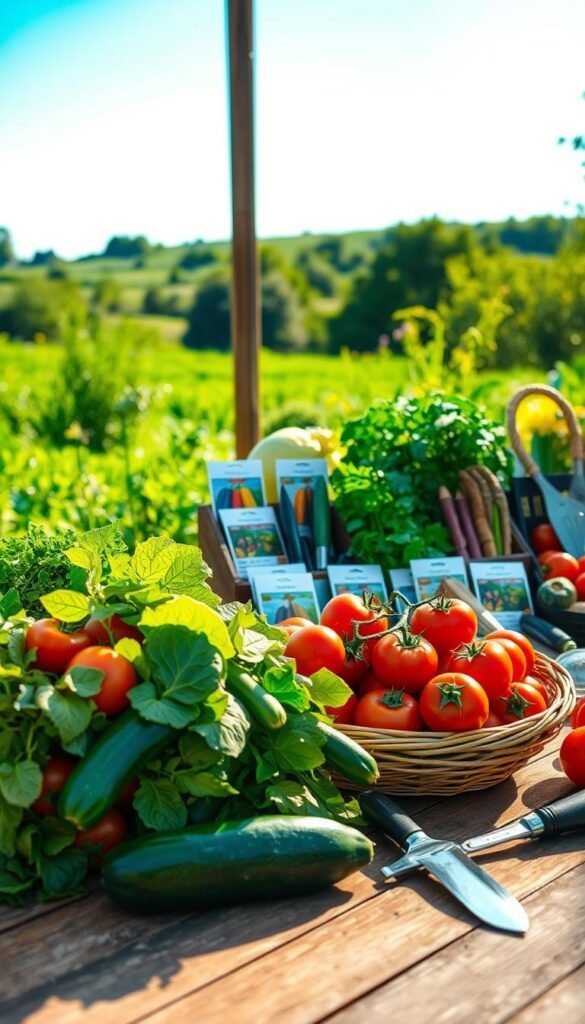
Not all veggies grow equally well in every backyard—location matters. The right picks depend on your soil, climate, and goals. Follow these tips to build a thriving, low-stress garden.
Focus on What Grows Well in Your Area
Local conditions dictate success. Use these tools to match plants to your area:
- USDA Zone Map (check by zip code)
- Farmers’ market intel: Ask growers, “Which tomatoes thrive here?”
- Seed packet codes: HR = heat-resistant, PM = powdery mildew-proof
Repeat Top-Performing Varieties
82% of successful gardeners keep a “winners” list. Track:
| Variety | Yield | Notes |
|---|---|---|
| Red Carpet Onion | High | Sweet, stores well |
| Dwarf Green Curled Kale | Consistent | Survives -20°F |
Experiment with New Options
Try the 70/20/10 rule:
- 70% proven crops
- 20% improved varieties (e.g., 58-day Sun Gold tomatoes)
- 10% wildcards (like purple carrots)
Add Fun Picks to Stay Motivated
Grow something unexpected each year. Examples:
- Striped ‘Moon & Stars’ watermelon
- Rainbow Swiss chard
Rotate “Once-in-a-While” Crops
Plant edamame or okra every 3 years to prevent soil fatigue. This keeps your garden fresh and productive.
Easy-to-Grow Vegetables for Beginner Gardeners
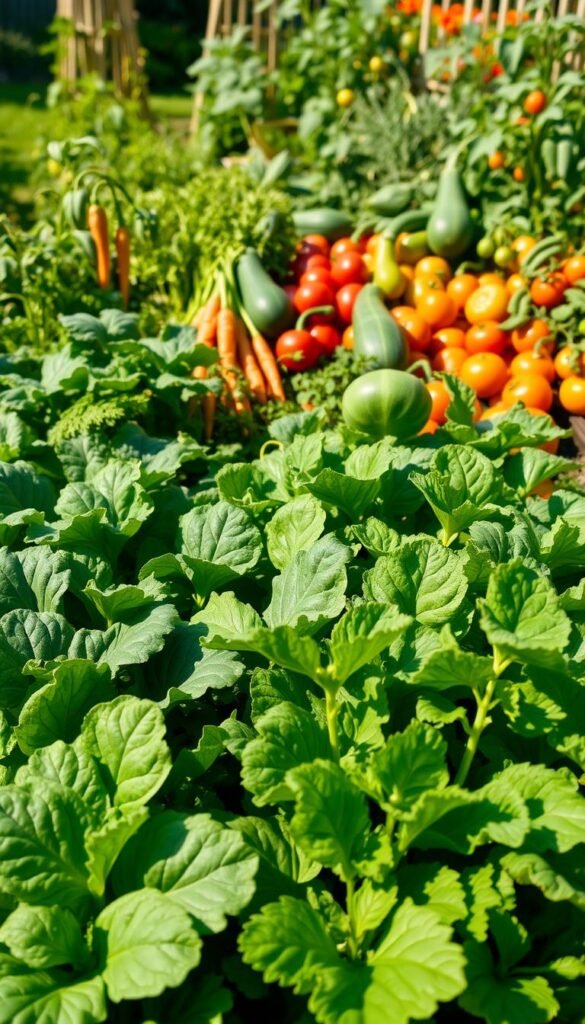
Starting your first garden? These foolproof veggies guarantee success. Focus on plants that forgive mistakes and deliver fast results. Below, we break down the top picks for stress-free growing.
Tomatoes: Small and Sturdy Wins
Cherry types like Sun Gold outperform heirlooms with 89% fewer diseases. Compact varieties thrive in pots or tight beds. Avoid overwatering—let soil dry slightly between drinks.
| Type | Yield | Best For |
|---|---|---|
| Sun Gold | 10–15 lbs/plant | Containers |
| Roma VF | 8–12 lbs/plant | Canning |
Lettuce: Cut-and-Come-Again Abundance
Buttercrunch and Winter Density regrow after snipping, tripling harvests. Sow seeds every 2 weeks for nonstop greens. Shade them in summer to prevent bolting.
Radishes: Speedy and Space-Smart
Ready in 22 days, radishes pair well with slow growers like carrots. Their peppery crunch adds zing to salads. For best results:
- Plant in cool weather
- Thin seedlings early
- Water evenly to avoid splitting
Pro tip: Tuck radishes between rows—they’ll be gone before neighbors need space!
Understanding Your Growing Conditions
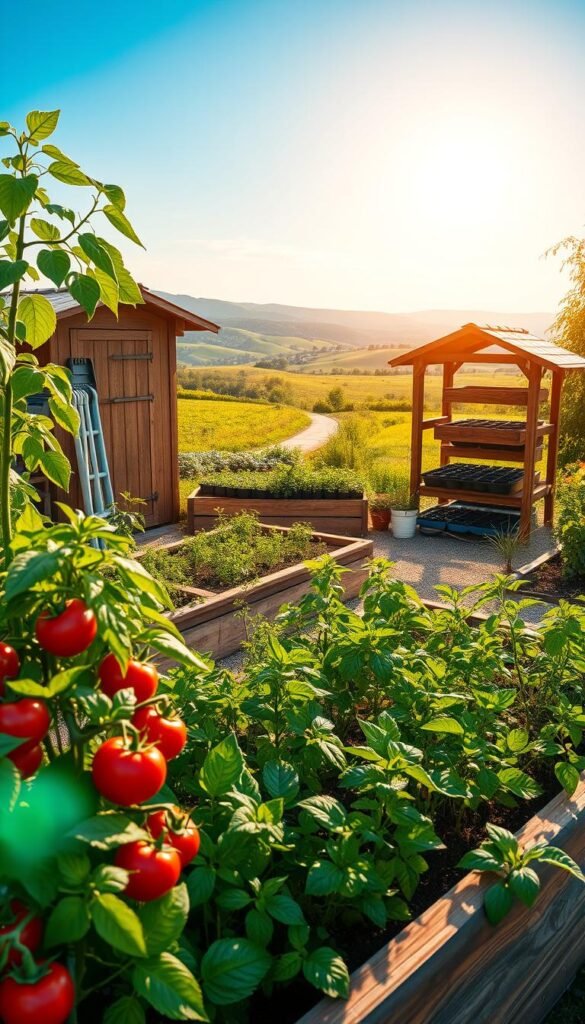
Your garden’s success starts with knowing your environment. Local weather, soil type, and sunlight shape what will thrive. Matching plants to these conditions prevents wasted effort and boosts yields.
Find Your USDA Hardiness Zone
The USDA zone map divides North America into 13 zones based on winter lows. Zone 5 handles -20°F winters, while Zone 9 rarely freezes. This affects planting dates and crop choices.
Follow these steps to check your zone:
- Visit the USDA website and enter your ZIP code
- Note your zone number (e.g., 7b)
- Compare it to seed packet recommendations
Microclimates matter too. South-facing slopes warm faster in summer. Urban areas often run 5-10°F warmer than rural spots.
Prepare Your Soil for Maximum Growth
Healthy soil means happy plants. A 3″ compost layer can triple yields by improving texture and nutrients. Test your dirt to uncover hidden issues.
| Soil Issue | Fix | Best For |
|---|---|---|
| Clay (slow drainage) | Add perlite/sand | Raised beds |
| Sandy (dries fast) | Mix in compost | Root crops |
| Acidic (pH under 6) | Apply lime | Blueberries |
For containers, use this mix:
- 60% topsoil
- 30% compost
- 10% perlite
Water wisely—most veggies need 1″ per week. Use a rain gauge to track natural rainfall. Vegetable gardening basics confirm proper drainage prevents root rot.
Pro tip: Sun-tracking apps help identify the brightest spots. Most crops need 6+ hours of direct light daily.
Planning Your Garden Layout
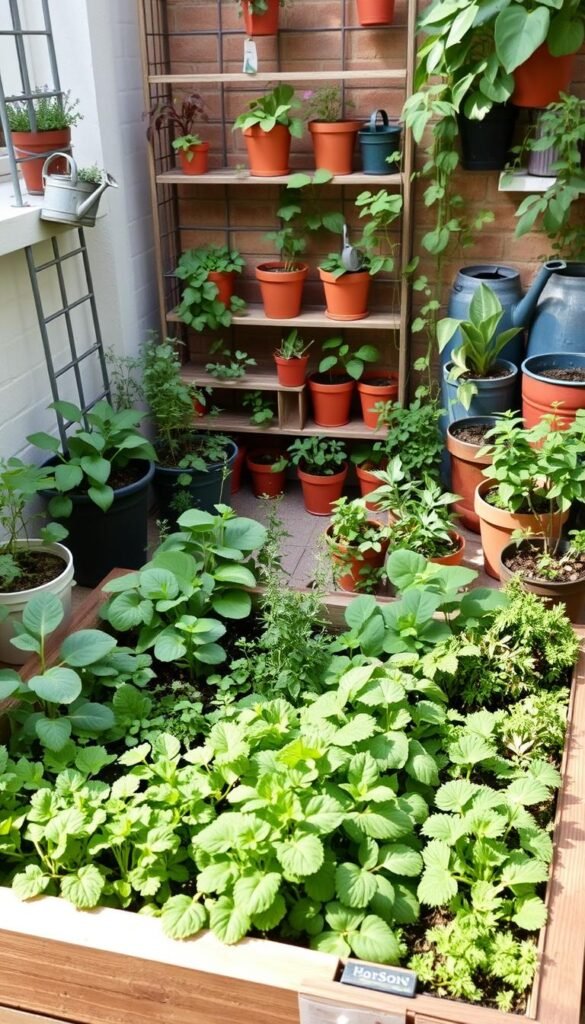
Smart garden layouts turn tight spaces into abundant harvest zones. Whether you’re working with a balcony or a backyard, the right design boosts yields and cuts maintenance. Focus on two strategies: vertical growing and smart pairings.
Space-Saving Crops for Small Gardens
Vertical trellises can increase yields by 400% per square foot. Ideal crops for this method include:
- Pole beans: Grow 6–8 feet tall; use A-frame trellises
- Cucumbers: Train onto cattle panels for easy picking
- Peas: Plant early spring; pair with netting
For containers, try compact vegetables like ‘Patio Baby’ eggplants or ‘Bush Champion’ cucumbers. They need just 12″ of space.
Companion Planting Basics
Some plants protect others naturally. Marigolds slash nematodes by 79% when planted near tomatoes. Other powerhouse pairs:
| Combo | Benefit |
|---|---|
| Basil + tomatoes | Repels flies; enhances flavor |
| Carrots + onions | Onions deter carrot pests |
*Pro tip:* Add flowers like nasturtiums to repel aphids. They’re edible too!
For shade areas, grow leafy greens or radishes. They thrive with just 4 hours of sun. Rotate crops yearly to keep soil healthy.
Where to Find Quality Seeds and Seedlings
Great gardens begin with the best seeds and seedlings. Whether you shop locally or online, knowing where to look saves time and money. The right sources offer healthy plants suited to your area.
Local vs. Online Seed Sources
Local nurseries let you inspect plants before buying. Look for these signs of quality:
- Bright green leaves with no spots
- Firm stems (not leggy or weak)
- Moist but not soggy soil in pots
Top online retailers like Hudson Valley Seed Co specialize in regional favorites. Their varieties thrive in specific climates. Check reviews for germination rates before ordering.
How to Read Seed Packets Like a Pro
Seed packets contain codes that reveal key traits. Here’s what to look for:
| Code | Meaning |
|---|---|
| OP | Open-pollinated (saves true-to-type seeds) |
| F1 | Hybrid (often more disease-resistant) |
| PM | Powdery mildew resistant |
Store seeds properly to extend their life. Keep them in airtight jars in a cool, dark place. Onions last one year, while tomato seeds stay viable for four.
For urban growers, compact varieties work best in small spaces. Join local seed swaps to discover new options each year.
Pro tip: Test old seeds by placing 10 between damp paper towels. If fewer than 6 sprout, buy fresh stock.
Your Journey to a Thriving Beginner Garden Starts Now
Your green thumb adventure begins today—no experience needed. Every expert gardener started with that first seed. This season could bring your first homegrown food—juicy tomatoes or crisp greens. The key? Just start now.
Grow your skills along with your plants. Try these resources:
- Local nurseries for zone-friendly vegetables
- Online tools like USDA’s planting calendars
- Home gardening forums for quick advice
Some crops will shine while others teach lessons. That’s normal! In a few years, you’ll have a thriving garden and stories to share. Grab those gloves—your plot awaits.

